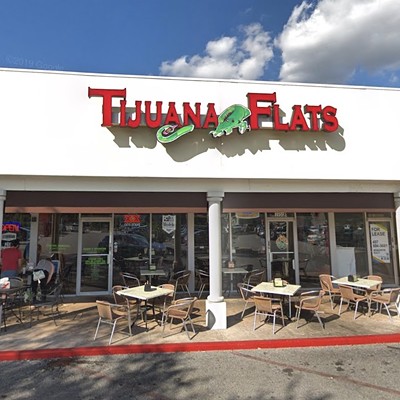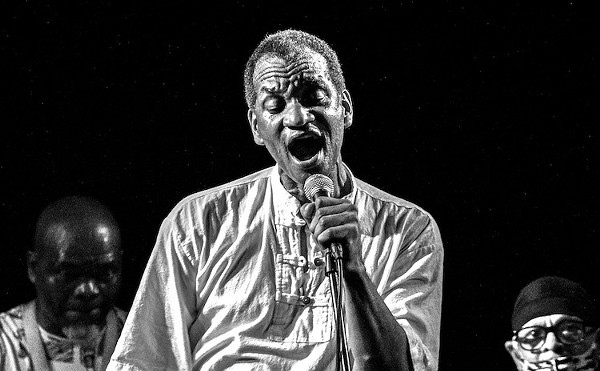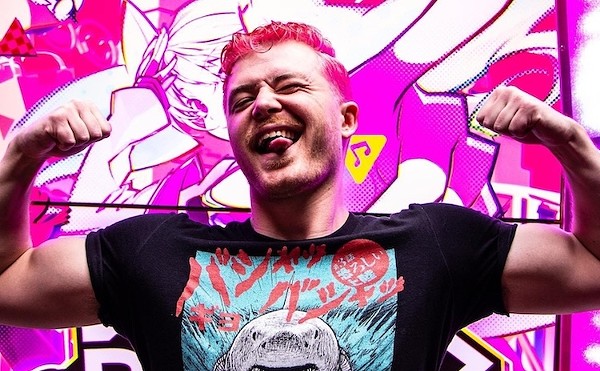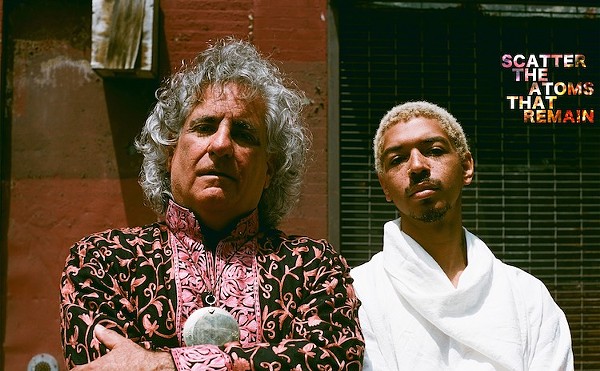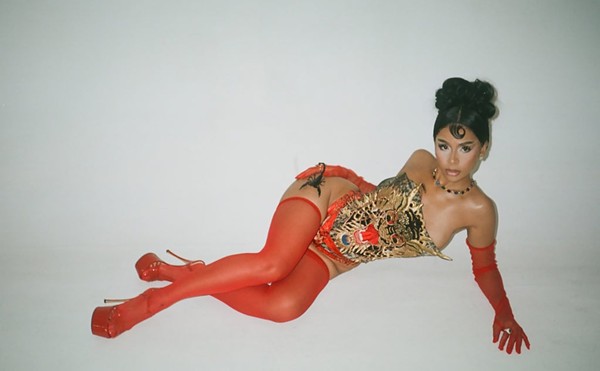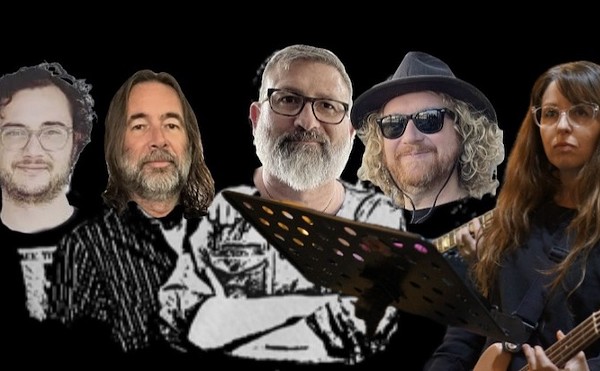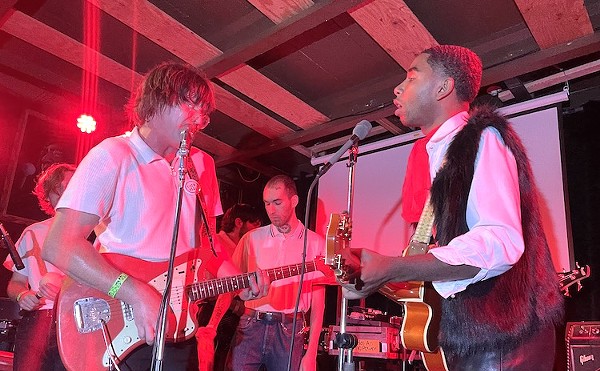After a decade of laying low in Orlando, jazz is making a comeback. Sort of. For proof, one need only to venture around town at night. Celebrated multi-instrumentalist Anthony Cole has been packing in crowds every Thursday night at Dante's for months. BMF and DJ Slack's Phat-n-Jazzy has been a Tuesday institution for years at Sapphire; its Universal CityJazz Friday offshoot Phunk'D Up has slowly but surely been attracting a respectable crowd. And the ever-busy BMF also co-hosts Soul'D-Out, Zinc's acid-jazz-flavored Sunday entry. That's in addition to improvisational acts, such as Beat Science and Numb Right Thumb, who enjoy steady bookings on area stages. Even 24-hour eatery The Globe is now hosting live jazz midday Sundays.
But all this should come as no surprise, because the spirit of improvisational jazz lives right here in Orlando. That's Sam Rivers, the 70-something avant-garde musician and composer, whose unrivaled influence has pushed many local musicians toward jazzy experiments.
Rivers has continued to spread his jazz wizardry through his world-acclaimed trio and his 17-piece RivBea All-Star Orchestra. (The orchestra is still commanding the global spotlight, just releasing Culmination, the follow-up to Inspiration, Rivers' 1999 Grammy-nominated studio album.) Despite his worldly status, Rivers performs regularly on the local front, in addition to sitting in with other musicians. It's not unusual to bump into Rivers around town, supporting the scene with his powerful presence.
Another supporter of jazz in its many forms is avant-garde concert promoters Civic Minded Five, which book fringe jazz acts sporadically at Rollins College -- the types usually seen in more sophisticated markets. With Rivers in Civic Minded Five's pocket (both are organized by in-tune Matt Gorney), they exercise their clout to draw national talent.
In any case, the jazz revival is making people pay attention. And it's not just listeners -- musicians are jumping into the crowd-swelling act, too.
In general, jazz is synonymous with legends like Miles Davis and John Coltrane, who specialized in improvisational, free-form music that ranged from mellow and trance-inducing to hard-hitting and frightening, often in the same piece. Stylistically it is usually, but not always, associated with brass instruments, skillful playing and occasional turns at the piano. And the mental image is often that of a smoky club where people of various ill repute meet for after-hours fun. Or where intellectual sorts go to hear music free of commercial concern or enforced structure. But really, the only true definition of jazz is that the music is improvised. Everything else is just cultural gravy.
Rivers continues to follow his own improvisational pathway, but somewhere along the way, the new cats got hip to it. And rather than copy his sound directly, they've channeled the spirit and used it as a blueprint for a wide variety of jazz-based experiments.
Understandably, none of the musicians interviewed for this story would claim that they were straight-ahead jazz purists. Instead, terms such as jazz influenced, groove jazz and acid jazz were frequently referenced. Despite semantic quibbles, nearly all of the artists share a similar love for musical improvisation and exploration, and a desire to share that love with an audience.
Pleasure Island Jazz Company manager John Berry admits that there's "not a lot of call for jazz traditionalism. ... We've done just about everything, and there wasn't a good response for it." But artists who mix jazz with techno and hip-hop into a blend known as acid jazz get a healthy response, indeed.
Just look at the crowded house for Sapphire's "Phat-n-Jazzy" or City Walk's "Phunk'D Up." There, local superstars like BMF, Pimp Daddy Nash and DJ Slack mix dance beats and house grooves with cool, jazzy rhythms to create a scene unlike anything else in town. Think of it as a rave but with live musicians joining in, or as a "real" jazz band performing but with DJs playing most of the parts.
"I think of the way I play as free-form," BMF says. The jock, who credits jazz-friendly hip-hoppers like A Tribe Called Quest as an influence, is well known for dropping bits of Coltrane into his sets. But he mixes the pieces with elements of house music and hip-hop, and often invites musicians (usually drummers, MCs or horn-players) to come in and jam with him and his partners. "It's more soulful and laid back [than most dance music]. A lot of people just listen and don't dance. It's the kind of music that makes you smile."
Pimp Daddy Nash, the other half of "Phunk'D Up," feels that the DJ-jazz hybrid brings out the best in both audiences. "House breaks are designed to get butts on the floor, but [acid jazz] has that crossover potential," says Nash. "People who listen to straight jazz might think it's blasphemous, but I don't think it's that different. Miles Davis experimented with dance stuff, and turntables are just another instrument, just another part of a band."
The most noteworthy thing about acid jazz is that now the DJs make dance music palatable for outside tastes by incorporating more sophisticated instrumentation -- without overdoing it. The horn samples and guest percussionists add color and classical justification to the booming dance beats. These turntablists never forget that the point of dance music is to make people move and have a good time.
The same sensibility is shared by Anthony Cole, the essential link between Rivers -- as a drummer in Rivers' trio and orchestra, Cole is always by the venerable musician's side -- and the younger generation he draws every Thursday to his own night, "The Garage," at Dante's.
"We're not a bunch of jazz heads, but we do support and respect it," says Cole. While his style is based heavily in improv, it's more akin to rock and funk than traditional jazz. But the free-form influence is apparent. "I just start playing a beat. It's spontaneous creativity, but not all forms of jazz are like that."
One of the highlights of nearly every Cole "Garage" is when that night's assembled band backs up MC Aasan, a.k.a. Swamburger, whose smooth flows and casual charisma have earned him valuable stage time. Aasan is quick to point out the similarities between DJ music and jazz combos. "It's always classy, it's along the same lines. One is sort of imitating the organic, one is organic. It's not like they mock each other; they both have a distinct sound," says Aasan.
It may seem odd to some that these jazz experiments have left behind cerebral associations and are moving in the same circles as populist dance music. But if Basie and Davis can exist in the jazz continuum, it should come as no surprise that Orlando's jazz scene also includes acts like Beat Science and Numb Right Thumb, who seem more interested in experimentation and less interested in groove. Not that either of the groups is against dancing per se, but it's not their main concern. Still, head Thumb Bob Barker dislikes the notion that Numb Right Thumb exists solely to freak people out without trying to entertain. "Doing what we want to do, none of us think its chic to repulse people with volume. As a listener who is late in life opening up to jazz, the stigma of elitism is a bummer."
A similar sentiment is expressed by Beat Science, which explores jazz with an emphasis on beats and low end.
"I want to bring back the immediacy, the visceral element back to jazz -- bring it right up in people's faces," leader Brian Carpenter says. "When a funk element is introduced, people can dance and move and groove to that, and it's much heavier with us, since we've surrounded it with avant-garde improvisation."
Now that jazz is on an upswing, how do the performers that stuck it out during the lean years feel about the new guard? "Jazz has not done well in this city," affirms Jacqueline Jones, a revered jazz vocalist who bends the rules herself.
"A lot of clubs only had one night, not because people didn't love it -- it wasn't turning enough money for the club owner. But dancing has brought back more music." She concedes that some of the older audience members may not be excited about what they're doing. But she understands that musicians need to keep pushing boundaries, and so she, for one, is "cheering for the young cats."


